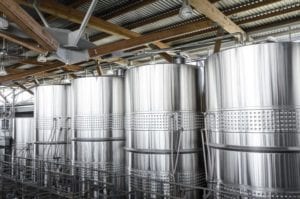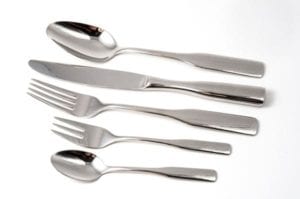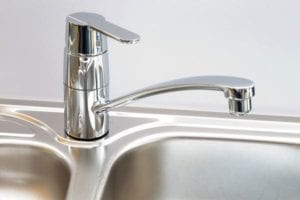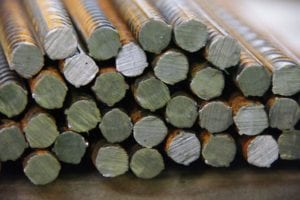
Stainless steels are mainly used when corrosion or oxidation is an issue, as the function that they perform can’t be duplicated by other materials for their cost. Over 100 years ago, it was discovered that a minimum of 12% chromium would impart corrosion and oxidation resistance to steel; hence the name “stainless steel”. Several different types of grades of stainless steel have been developed. Below are the different stainless steel grades explained.
Austenitic Grades
 Austenitic grades are those alloys which are commonly in use for stainless applications. The austenitic grades are not magnetic. The most common austenitic alloys are iron-chromium-nickel steels and are widely known as the 300 series. The austenitic stainless steels, because of their high chromium and nickel content, are the most corrosion resistant of the stainless family providing unusually fine mechanical properties. They cannot be hardened by heat treatment, but can be hardened significantly by cold working.
Austenitic grades are those alloys which are commonly in use for stainless applications. The austenitic grades are not magnetic. The most common austenitic alloys are iron-chromium-nickel steels and are widely known as the 300 series. The austenitic stainless steels, because of their high chromium and nickel content, are the most corrosion resistant of the stainless family providing unusually fine mechanical properties. They cannot be hardened by heat treatment, but can be hardened significantly by cold working.
Arthur Harris primarily uses austenitic grades of stainless steel like 304 and 316 in everything from float balls to stainless cabinet hardware.
Martensitic Grades
 Martensitic grades were developed in order to provide a group of stainless alloys that would be corrosion resistant and hardened by heat treatment. The martensitic grades (also known as the 400 series) are straight chromium steels containing no nickel and are also magnetic. The martensitic grades are mainly used where hardness, strength and wear resistance are required.
Martensitic grades were developed in order to provide a group of stainless alloys that would be corrosion resistant and hardened by heat treatment. The martensitic grades (also known as the 400 series) are straight chromium steels containing no nickel and are also magnetic. The martensitic grades are mainly used where hardness, strength and wear resistance are required.
Ferritic Grades
 Ferritic grades have been developed to provide a group of stainless steel to resist corrosion and oxidation, while being highly resistant to stress corrosion cracking. These steels are magnetic but can’t be hardened or strengthened by heat treatment. The can be cold worked and softened by annealing. As a group, they are more corrosive resistant than the martensitic grades, but generally inferior to the austenitic grades. These are straight chromium steels with no nickel, like the martensitic grades. They are used for decorative trim, sinks and automotive applications.
Ferritic grades have been developed to provide a group of stainless steel to resist corrosion and oxidation, while being highly resistant to stress corrosion cracking. These steels are magnetic but can’t be hardened or strengthened by heat treatment. The can be cold worked and softened by annealing. As a group, they are more corrosive resistant than the martensitic grades, but generally inferior to the austenitic grades. These are straight chromium steels with no nickel, like the martensitic grades. They are used for decorative trim, sinks and automotive applications.
Duplex Grades
Duplex grades are the newest of the stainless steels. This material is a combination of austenitic and ferritic material. This material has higher strength and superior resistance to stress corrosion cracking.
Precipitation Hardening Grades
 Precipitation hardening grades offer the designer a unique combination of fabric ability, strength, ease of heat treatment, and corrosion resistance not found in any other class of material. While designed primarily as a material to be used for bar, rods, wire, and forgings, martensitic precipitation hardenable alloys are beginning to find more use in the flat rolled form. Developed primarily as aerospace materials, many of these steels are gaining commercial acceptance as cost-effective materials in many applications.
Precipitation hardening grades offer the designer a unique combination of fabric ability, strength, ease of heat treatment, and corrosion resistance not found in any other class of material. While designed primarily as a material to be used for bar, rods, wire, and forgings, martensitic precipitation hardenable alloys are beginning to find more use in the flat rolled form. Developed primarily as aerospace materials, many of these steels are gaining commercial acceptance as cost-effective materials in many applications.




